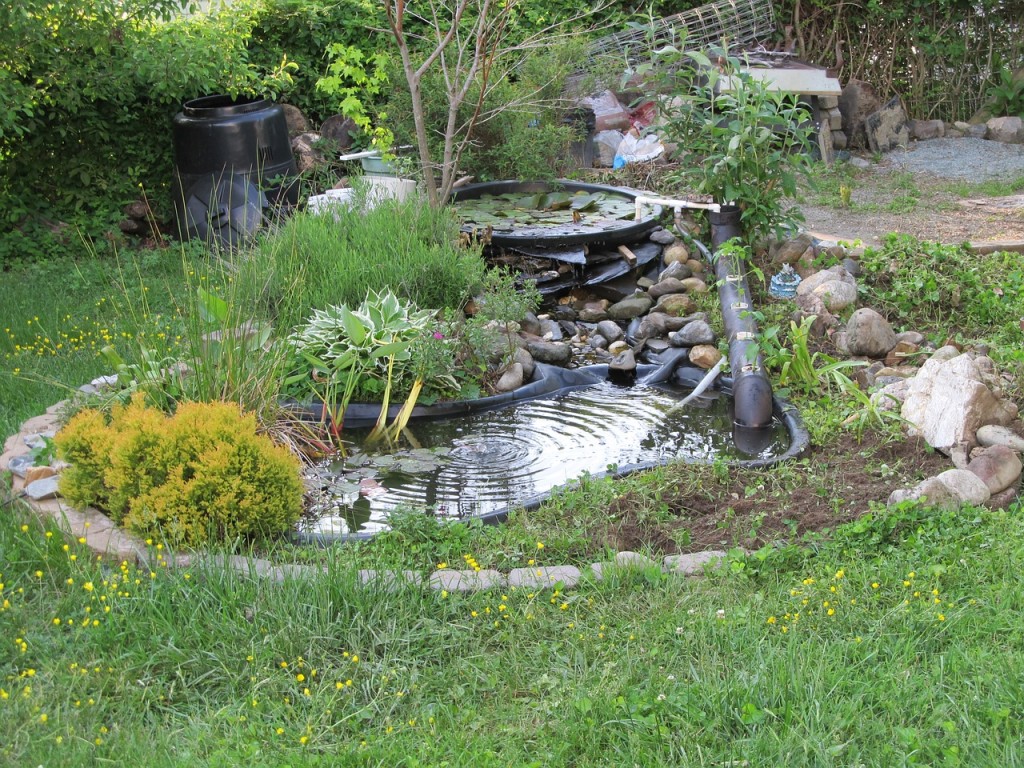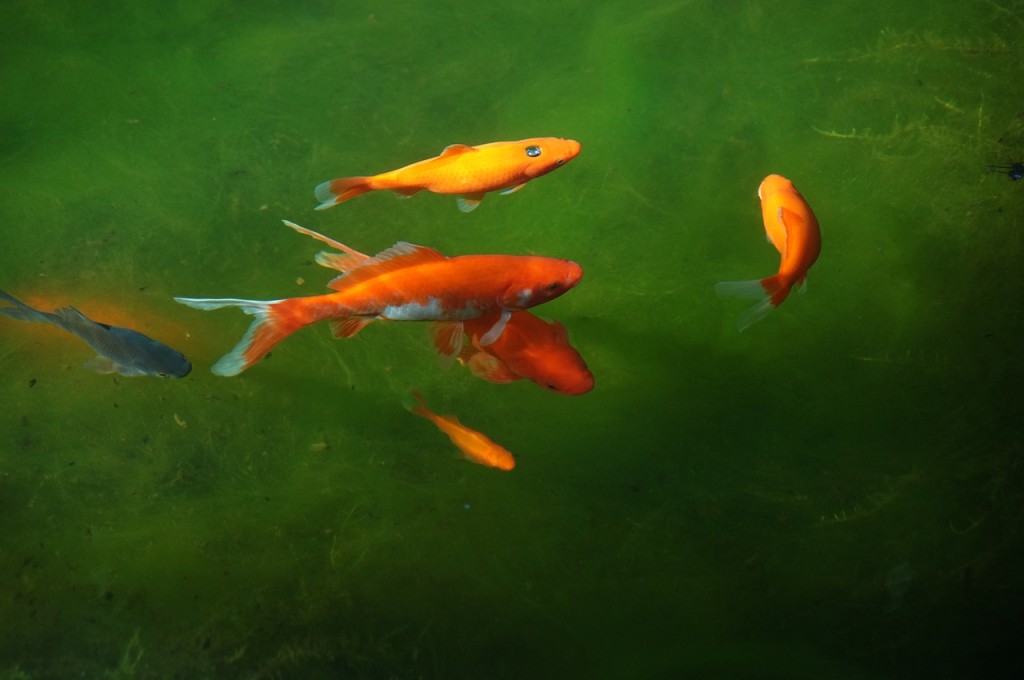Tilapia is a delicious and easy to raise fish at home. You can also start your home based fish farm with tilapia. You don’t need a lot of equipment, time, space or money to start raising tilapia at home.
We all know that locally grown organic foods are best for us. They are healthy and have the least impact on environment. Home raised fish grown in a natural environment, eating natural foods, without any chemicals, do not have chemical residue in them like commercially grown and farmed fish may have.
When you buy imported or processed and packaged fish, they add carbon dioxide to the atmosphere. There is a significant amount of energy wasted in the process of storing, processing and transportation, marketing and distribution.
To get fresh, organic foods at home, there is no better way than to grow your own food at home. Home raised fish has no carbon footprints, no chemical residue from food, pesticides, or herbicides, and the best part is they taste the best when eaten right out of your own home based fish farm.
Even if you don’t consider the environmental impacts, growing food at home would ease some pressure off form your grocery bills, save you money on gas, save you energy which you would otherwise spend for trips to the grocery store or storing food in your freezer or fridge.
Start a tilapia farm in your backyard
With the growing popularity of urban fish farming techniques, any place in your home can be turned into a mini fish farm. No matter where you live, you’ll find that you have some space available, either in your backyard, in your basement or even in your living room. You could set up some containers, tubs, aquariums or fish tanks to start a fish farm.
Home based fish farming can be done at any scale. It does not depend on the climate, region or neighborhood you live in. It does not require much attention from you either. Many of the urban farmers are raising fish for their own consumption, for friends and family, and have some left over to supply to their neighborhood, local stores, restaurants or chefs, who love homegrown organic foods.
We will discuss one specific fish that you are able to raise in your backyard, in small ponds. You can raise fish for yourself, your family or you could try to make a profit by selling them to restaurants, local stores, friends, or family.
“Growing your own food and farming your own tilapia requires far less of your time and effort, than the job you do to earn the money that you trade at the grocery store”. – Tilapia farming at home – Turn your backyard into a tilapia farm
Tilapia is a delicious fish and it’s easy to raise at your home based mini-farm. Tilapia is highly resilient, so it is suitable in a wide range of climatic conditions, and environment. Tilapia does well in shallow water, with minimum food, and grows fast.
Tilapia can be raised in backyard ponds, in tubs, large aquariums, or fish tanks. You can start a tilapia farm at any scale, and place your tanks anywhere, that may be suitable, indoors or outdoors.
Backyard tilapia pond
Choose a suitable place in your backyard for digging or installing a pond. Your pond needs to be at least 2 and a half feet deep, and large enough to accommodate the number of fish you plant to keep. If you live in a colder region, you might consider deeper ponds, or your pond might freeze over entirely during the winter, killing your fish.
A water heater, water fountain or a circulating water pump is recommended. It can keep your water quality up to standard. They keep adding oxygen to your water and keep it from freezing.
You can easily dig your own pond using simple tools, or if you need a bigger pond, you could contact your local home and garden supply store or a landscaping company. There are tools available for rent that you can use for heavy digging or landscaping.
Environment
 For raising tilapia, without environmental impacts, a natural environment is needed. Make sure your fish pond receives enough sunlight and air. If your pond is indoors, arrange some lights for your fish pond or containers.
For raising tilapia, without environmental impacts, a natural environment is needed. Make sure your fish pond receives enough sunlight and air. If your pond is indoors, arrange some lights for your fish pond or containers.
Since tilapia is highly recipient fish, they can cope with a wide variety of different climatic conditions and environment. Make sure you add some aquatic plants and organic food that grows naturally in your pond. It will create a natural ecosystem in your fish pond.
Tilapia growth responds the most between temperatures of 82 and 86 degrees Fahrenheit. Tilapia will die if the temperature drops below 45-55º F, so use a water heater if you are in a cold region.
Juvenile Tilapia
Once you have your pond ready, you will need some juvenile fish. Contact your local hatchery for fingerling sized fish. Raising market sized tilapia from fingerlings is the best option for many home-based farmers.
When you get your young fish, make sure they have enough time to adjust to the new environment. Also monitor their behavior to make sure that they are eating adequate food, are healthy and not being bothered by predators.
Food for tilapia
Tilapia will eat a wide variety of plant based food and insects. They will eat from naturally occurring food in your pond form its ecosystem. You may also feed them with commercial pelleted food form a pet store or fishery at initial stages. Fish tend to grow faster when they eat throughout the day from the pond’s natural ecosystem rather than when fed once or twice a day.
Taking care of your fish
Monitor your fish health regularly. See how much they are eating and their growth ratio. If they seem to eat less than usual, it could be caused due to pathogens or parasites. Separate any fish that looks sick visually. Adding salt (roughly one tablespoon of salt per gallon of water) and keeping your water slightly alkaline will discourage parasites and pathogens like bacteria and fungus from your pond. Follow the basic rules of pond maintenance given below.
- maintain good fish nutrition
- avoid over-crowding
- maintain good personal hygiene
- hand-washing with antibacterial soaps
- disinfectant foot baths
- live-haul truck disinfection
- limit visitors
Harvesting and marketing
For outdoor farms, tilapia harvesting and marketing is seasonal. They will grow up to a quarter of a pound within the end of a temperate growing season. Indoor farmers can harvest tilapia all year round.
For marketing, you can use several of the online resources that are free. Also use roadside signs, and contact your local grocery stores, restaurants, farmers’ markets, or your neighbors. Your friends and family would be an excellent place to start marketing.
Conclusion
Home based fish farming could be a lucrative business that not only provides food security but also financial freedom. With the growing environmental awareness and health consciousness, more and more people are inclined on buying locally grown organic food. Anyone with some spare time and will to grow some extra food can get into this business and generate some extra income in addition to providing healthy high quality organic food for their friends, family and community.
Hope you will enjoy raising tilapia in your backyard pond. Please put down your thoughts in the comment box. It would inspire us in our future blogs.
Want to start your own business? We show you how. Click Here to get your Free Book to Unleash the Entrepreneur in You!
We’d also appreciate your comments on our Facebook page. To learn more about sustainable aquaculture please call our office at: 303-495-3705: or click here to book a meeting.
Source: WorldWide Aquaculture
Related Articles and Resources:
-
- Aquaculture – Fish Farming of Tilapia at Home | WorldWide Aquaculture
- Urban Farms – Grow Fresh Organic Foods at Home | Nourish The Planet
- 11 Actions You Can Take to Reduce Your Carbon Footprint | Nourish The Planet
- Understanding Water Quality for Aquaculture | WorldWide Aquaculture
- A Guide to Building a Fish Pond– Growing Fish in Your Home Pond | WorldWide Aquaculture
- Tilapia farming at home – Turn your backyard into a tilapia farm






I wish to starting the tilapia farming
I want more information about the new job
Great, please call Wayne at 303-495-3705. He will be happy to assist you.
Thanks
Hello,
you mentioned a backyard pond, I live in Texas and sometimes it gets cold below 45-55 degrees. How can I control the temperature in this case?
I am doing my research on Tilapia farming and hope to create one in the near future.
thanks,
Hi Phy,
You can control the temperature of your pond either by circulating water, or with a water heater. If your pond do not freeze over entirely, your fish would usually survive. Make sure that your pond has enough depth for water to remain in liquid form underneath the frozen ice. Usually a pond with over 4 feet of depth will work. For more information give us a call. Phone: 303-495-3705
Hey blogger – Tilapia do not survive below 50 very well. With a water heater – yes.
You’re right! Thanks.
What breed should I buy?
Angela,
Thanks for your question. It is a good one. I cannot answer it directly without getting more information from you. However, we have a site where you can get much information about fish farming and all other kinds of agriculture and what we call ecolonomic living (https://ecolonomics.org). That site is http://www.eatcommunity.com. We will be making you a FREE Member of that site and then we can communicate with you easily about your fish farming questions. On that site there is a questionnaire you can fill out to tell us about your aquaculture interests and even schedule a time to talk with us. I hope this has been helpful and keep up your aquaculture dreams! You are helping make the planet better.
Areeb
I moved into a home that already had a tilapia Pond and I am wondering do the fish go bad if there are three or four years old or can you still eat them?
Thank you for you message about starting a small tilapia farm.
Where can I buy tilapia finger link here in the Philippines. What kind of tilapia good to raise?